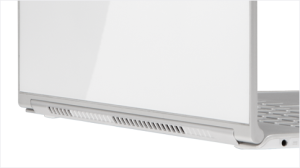How do Computers Stay Cool
Heat sinks are passive cooling components commonly found in PCs. They consist of a series of metal plates, pipes, pins and lattices that work together to absorb heat from electrical components through conductivity then dissipate it into the environment.
Conduction, which is the central operating principle of heat sinks, occurs when two objects with different temperatures are placed in contact with each other. When they touch, the hotter object’s faster-moving molecules transfer a portion of their energy to the colder object’s less-active molecules.
Not surprisingly, for conduction to take place optimally, the two objects must be made out of a material that is a good conductor.
Metals, for the most part, are very effective and, as such, form the base material for almost all heat sink devices. Aluminium alloys and copper are probably the two most commonly used metals on commercial heat sinks as they offer a favourable thermal conductivity-to-cost ratio.
 If we take a computer’s central processing unit (CPU) as an example component, its mounted heat sink operates by attaching itself to the CPU’s small surface area (ie the top of the chip) and then transfers the generated heat away via a series of pipes into a lattice.
If we take a computer’s central processing unit (CPU) as an example component, its mounted heat sink operates by attaching itself to the CPU’s small surface area (ie the top of the chip) and then transfers the generated heat away via a series of pipes into a lattice.
The lattice, due to its considerable surface area, allows for a balanced and more rapid radiation of the heat into the surrounding system, which enables the processor to remain at a stable and efficient operating temperature.

